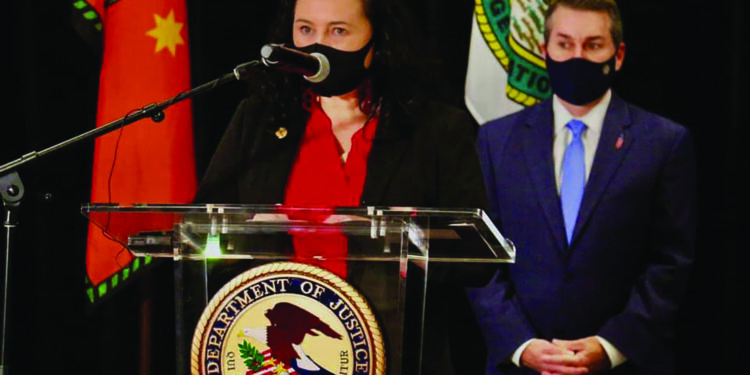By Angel Ellis, Reporter
OKMULGEE, Oklahoma —On Nov. 24, Muscogee (Creek) Nation Principal Chief David Hill, Cherokee Nation Principal Chief Chuck Hoskins, U.S. Attorney of the North District of Oklahoma Trent Shores and U.S. Attorney of the Eastern District of Oklahoma Brian Kuester of the Eastern District of Oklahoma announced the launch of a pilot project to implement a Tribal Community Response Plan with Muscogee (Creek) Nation and Cherokee Nation, in accordance with Attorney General William P. Barr’s Missing and Murdered Indigenous Persons Initiative.
Accompanying the MCN Chief was Acting Secretary of Community and Human Services Shawn Partridge and the tribal domestic violence prevention staff.
Speaking on behalf of the Muscogee (Creek) Nation Principal Chief Hill encouraged a collaboration.
‘We are unquestionably at our strongest when partnering with agencies and tribes working toward our shared goal, and that is enhancing public safety and protection for those who need it most,’ Muscogee (Creek) Nation Principal Chief David Hill said. ‘Unfortunately, we know all too well the challenges we face and the trends we must reverse regarding Missing and Murdered Indigenous People.’
‘We feel these types of collaborations, in which our input is sought and utilized to craft culturally specific guidelines, are the best path forward and we can’t wait to get started.’
According to a press release about the initiative, ‘The goal for the Tribal Community Response Plan pilot project is to establish a collaborative response from tribal governments, law enforcement agencies, and other partners by implementing culturally appropriate guidelines when investigating emergent cases of missing and murdered American Indians and Alaska Natives.’
Tribal leaders collaborated with the U.S. Department of Justice and other federal agencies in order to develop draft guides for developing a Tribal Community Response Plan in conjunction with tribal leaders, law enforcement and tribal communities.
Each plan will be composed of guidelines addressing at least four different areas in response to MMIP cases: law enforcement, victim services, community outreach and media/public communications.
Oklahoma’s U.S. attorneys are the first to launch the pilot project. Five other U.S. attorneys’ offices are slated to do so at later dates. Lessons learned from the pilot project will be used to improve the draft guides for developing a Tribal Community Response Plan before they are used in states across the country.
‘Today’s new Missing and Murdered Indigenous Persons Pilot Program is an important partnership with the United States Department of Justice, and will further a goal that we all share: to protect Cherokees on the reservation and bring missing Cherokees home to their families and communities,’ Cherokee Nation Principal Chief Chuck Hoskin Jr. said. ‘When one of our Cherokee citizens is hurt or missing, it’s an emergency. And now this pilot program will help pool our focus and resources on these cases with immediate, coordinated and professional response plans.’
‘The first step in achieving justice for missing and murdered Native Americans was acknowledging the injustice of any historical indifference to or neglect of these tragic cases. Now, it is time for action to tackle this crisis head-on,’ U.S. Attorney Trent Shores said. ‘I am proud to partner with the Muscogee (Creek) Nation and Cherokee Nation to announce the first of its kind pilot project to develop and implement protocols and community action plans for missing and murdered indigenous people cases. The Department of Justice continues to prioritize public safety in Indian country, especially when it comes to reducing the violent crime rates that seem to disproportionately impact Native American women and children.’
‘An effective strategy to combat violent crime on tribal lands can only be successful with a united front of our law enforcement partners working with the communities we serve,’ FBI Special Agent in Charge Melissa Godbold of the Oklahoma City Field Office said. ‘This program unites all of us in our shared goal of creating a safer community with a focus on solving crimes affecting missing and murdered indigenous people in Oklahoma.’





